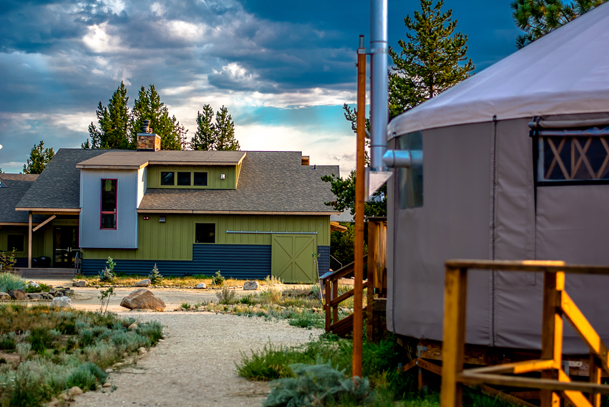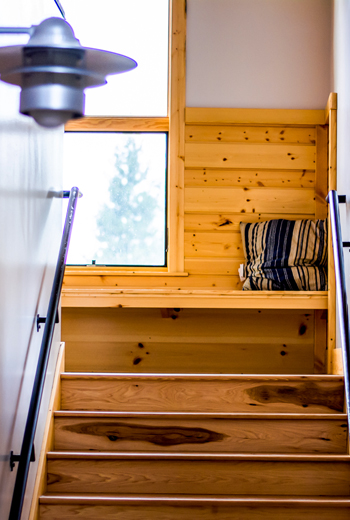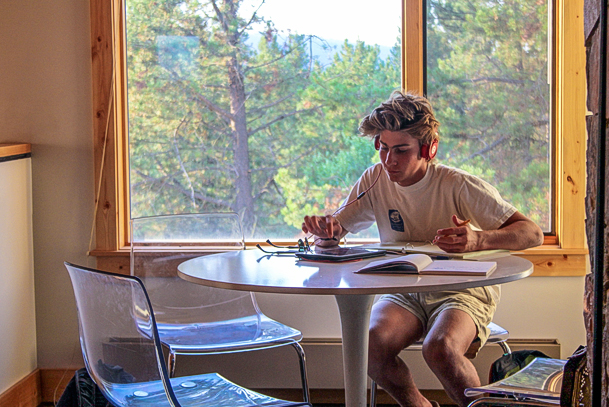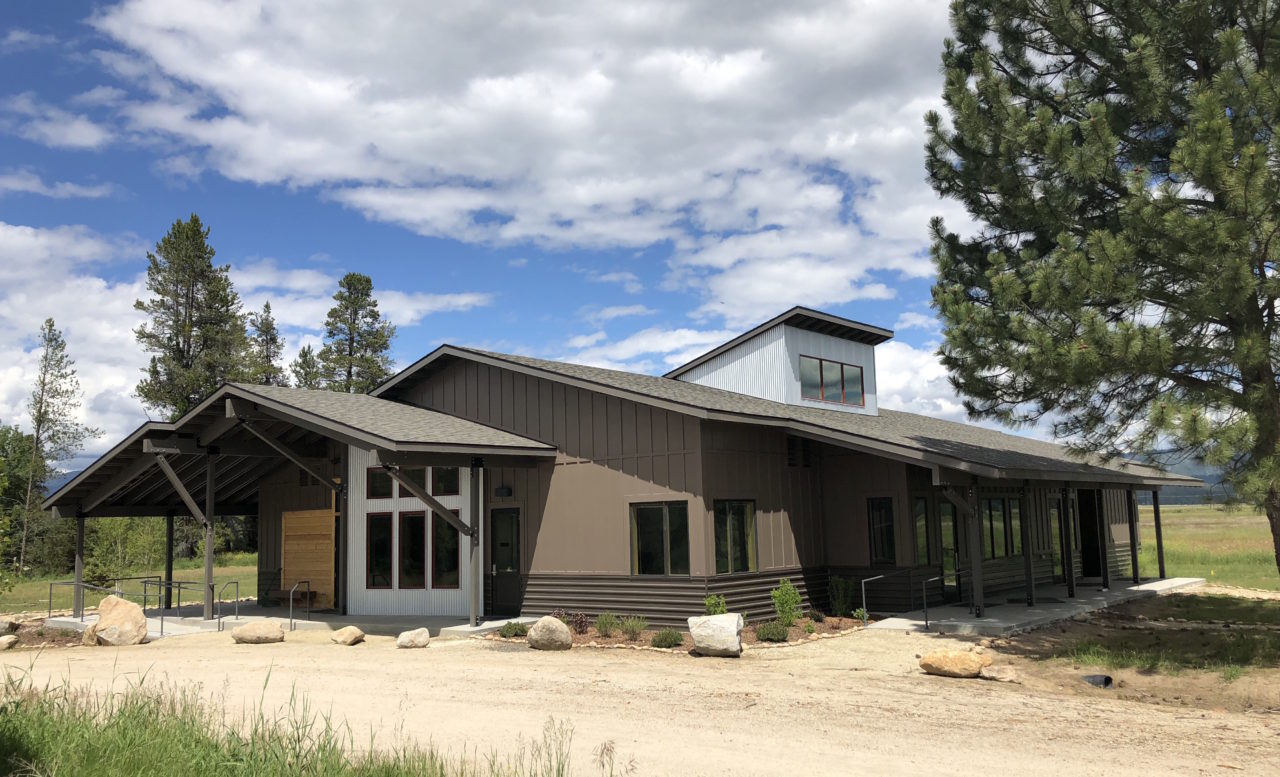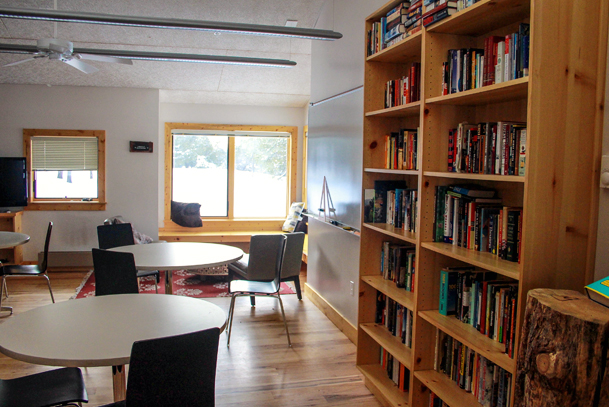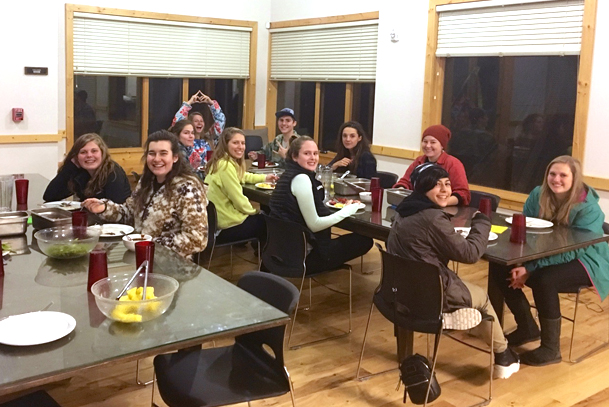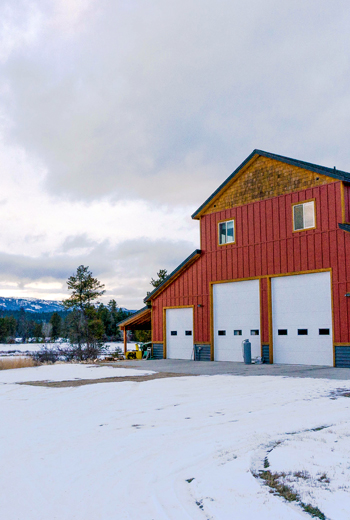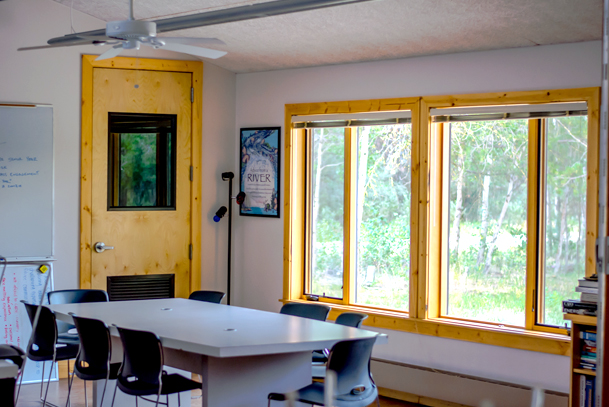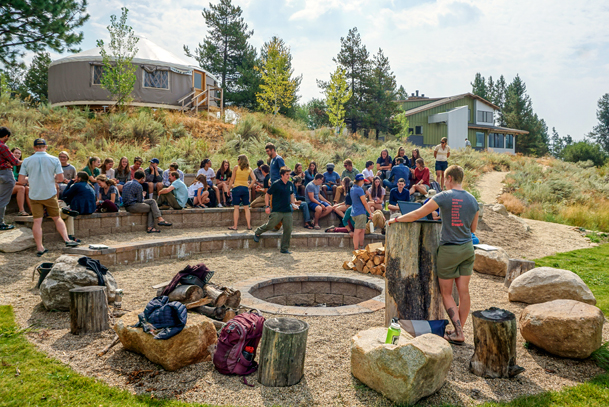Alzar School Campus
Thrive at a campus that supports learning, collaboration, and adventure.

Idaho campus
Alzar School is located along the banks of the Payette River in Cascade, Idaho (see Google Map). Sitting on over 100 acres of property, we enjoy 1.3 miles of river frontage. The school is located within 45 minutes of two ski resorts and sits just west of the largest wilderness area in the continental U.S. (The Frank Church Wilderness). We are also less than two miles downstream of a world class whitewater park. Students and faculty all live right on campus, and housing is between the two main school buildings, the Confluence Building and the Headwaters Building.
Three fireplaces warm this cozy building where students spend most of their time during the academic day. Housing multiple classrooms, the dining room, and study spaces, this building was designed to create spaces for collaborative and independent work.
Faculty live on campus near the Confluence Building with 102 acres to explore as their backyard.
This trail follows the perimeter of the school’s property along more than a mile of river through dense forest and along a 20-acre beach. Wildlife abounds and great views of Snowbank Mountain and Colliers Peak are guaranteed.
Carved into the hill below the Confluence Building and yurts lies a fire ring with stadium seating looking out onto the campus green. Capture the flag, spike ball, and a host of other campus games are played here on the lawn.
During time on our Idaho campus, students live in yurts with up to eight classmates, each with their own bunk space and desk area. Yurts are equipped with a restroom (toilet and sink) and wood burning stove. Yurtlife is a highlight for many of our students and more images can be seen on the housing page.
Home to the Patagonia Learning Center, students and staff head here for community meetings, expedition briefings, and other large group gatherings. Staff offices, infirmary, laundry, and the guest suite are located in this building.
The first building you see as you arrive on campus houses our outdoor program, bouldering wall, and the accommodations for two faculty members. If you are headed out on an adventure or completing morning workout, it will likely involve a stop at the barn.
Co-founders Sean and Kristin Bierle invite students over in small groups throughout the semester for a home-cooked meal and lively discussion.
chilean campus
Each semester, we spend approximately six weeks in Chile, in the Aysén Region of Patagonia. For three weeks we make our home in the Coyhaique area. Here you can anticipate a more traditional academic day while getting to know the towns and the communities in which you reside. The natural beauty of glacial lakes, crystal clear rivers, and dramatic volcanoes provide inspiring classrooms.
The Class II whitewater of the Rio Palena offers Alzar School students a multi-day river expedition site. The Palena flows at a consistent gradient from its headwaters at the Chile-Argentina border to the ocean, with a variety of sections available for expeditions.
Just over an hour away from Alzar School’s base, the Rio Mañihuales provides incredibly clear water and Class II-IV rapids for students.
Coyhaique (“between rivers”) is known as the gateway to remote parts of Patagonia and has about 50,000 residents. Cerro McKay, with its dramatic rock face, looms over the city. The city offers chances for students to practice their Spanish, whether it is grocery shopping at the local markets, seeking out wool or ceramic souvenirs from local artisans, or visiting one of the several museums.
The Rio Simpson, which flows through Coyhaique and out to Puerto Aysen, offers a variety of kayaking sections. Its green waters are famous for trout fishing and make a fun spot for our students to practice kayaking after classes.
Alzar School is developing an unparalleled base of operations on Lago Atravesado, just 30 minutes outside Coyhaique. This lakeside “campo” features over 375 acres of native forest, a stunning rock beach, and waterfalls of Arroyo Arbolitos (“Little Trees Creek”).
The pristine water and vertical canyons of the Rio Paloma make for incredible river adventures for our students. There is an upstream Class III-IV section, as well as a lower Class II section that is perfect for new kayakers.
Cerro Castillo National Park’s most prominent feature is a jagged, iconic peak. “Castillo” means “castle” in Spanish, and the steep basalt walls of the mountain offer dramatic vistas for students’ explorations.
Many tourists visit Chile simply to take this drive from Coyhaique to Villa O’Higgins. The landscapes are everything you would expect from majestic and wild Patagonia.
Chile’s newest national park founded by Doug and Kristine Thompkins is over 640,000 acres and was formally signed into protection as a national park by the Chilean government in 2018.
Chile’s largest river by volume is a teal aqua color that transforms as tributaries drain in and make their way to the town of Tortel. This river has a mellow section, which we use, and a famous expert only run upstream.

